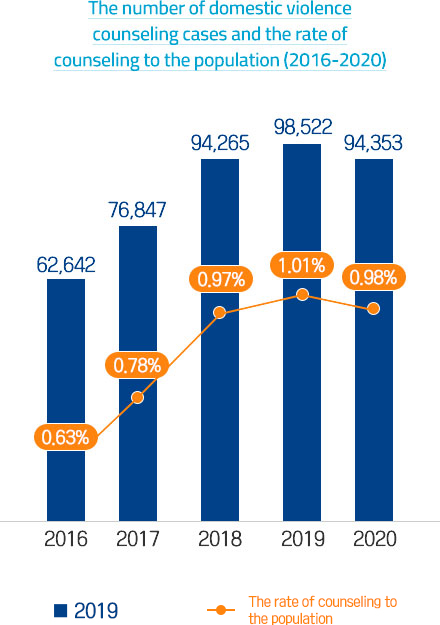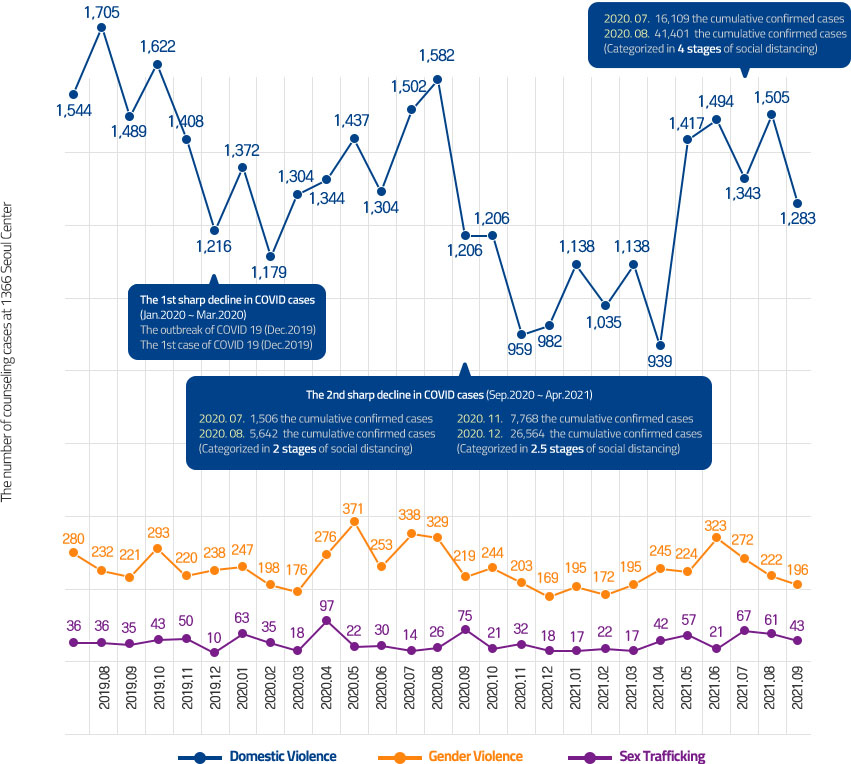
COVD-19 has negatively impacted women more than men, with women's safety at risk due to lockdown measures such as social distancing and movement restrictions. With schools closing and social networks shrinking, more women were exposed to domestic violence and family conflicts due to increased time spent at home (The Diplomat, 2021). The international community, including the UN Women, stressed the need for protective measures regarding the safety of women at home due to COVID-19 (UN Women, 2020). In fact, in five countries(Brazil, Cyprus, France, Singapore and Argentina) where the rate of domestic violence was high during lockdown period of the first wave of COVID-19 pandemic in 2020, the report rate of domestic violence increased by 30.5% on average.


UNOHCR(2020) pointed out that the increase rate of domestic violence during COVID-19 lockdown period does not fully reflect the extent of the reality, and that it is difficult for the victims of domestic violence to request support to helpline or report to the police as it is difficult to separate victims from perpetrators, and perpetrators have increased control over victims. In Italy, New York City in the US and Spain, the number of domestic violence reports to police and counselling cases of helpline decreased significantly, as in Korea (Kim Hong Miri, 2021).
The Seoul Foundation of Women and Family conducted a 2021 survey on violence against women in Seoul to determine whether domestic violence in Seoul actually decreased after the outbreak of COVID-19 or whether certain factors made it difficult to report domestic violence amid pandemic. First, we checked the number of domestic violence reports to police and counselling cases of helpline before and after the outbreak of COVID-19. The two graphs below show that the number of domestic violence reports to police during COVID-19 decreased, and the rate of domestic violence counseling cases of helpline in Seoul to the population increased from 2016 to 2019, but decreased in 2020 during the time of COVID-19.




In order to confirm in detail the cause of decline in the domestic violence counseling rate and the police report rate during the COVID-19 period, We looked at the monthly change in the number of counseling cases at 1366 Seoul Center* from July 2019 to September 2021. As can be seen on the graph below, domestic violence counseling received at the 1366 Seoul Center plunged during the period of January to March 2020(first wave of pandemic), and September 2020 to April 2021(second and third wave), then it increases when social distancing regulations are eased.


This does not indicate that domestic violence counseling and reporting rates declined during the COVID-19 period; rather, as UNOHCR pointed out earlier, it indicates that victims of domestic violence are put in a difficult situation to ask for help (Kim Hong Miri, 2021; UNOHCR, 2020).
In the midst of pandemic, 'home' is not a safe place; it exposes victims of domestic violence to another risk. In order to prevent the isolation of victims of domestic violence during pandemic, it is necessary to prepare a support system that takes into account the situation that victims are in.